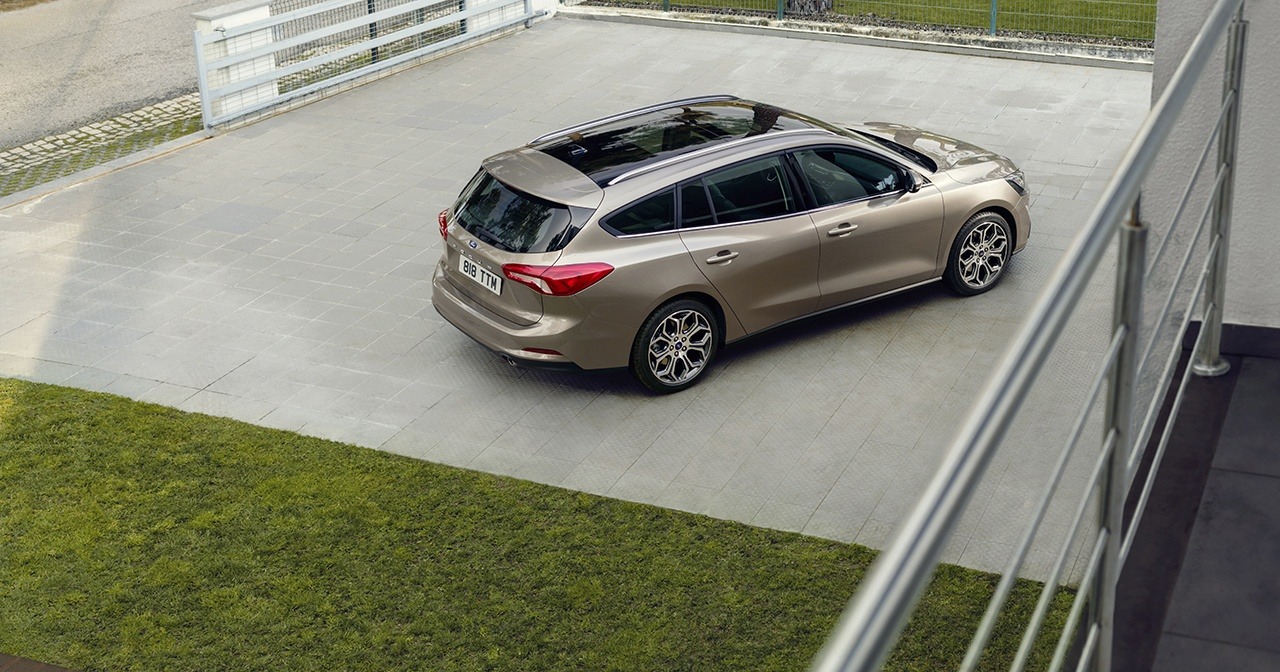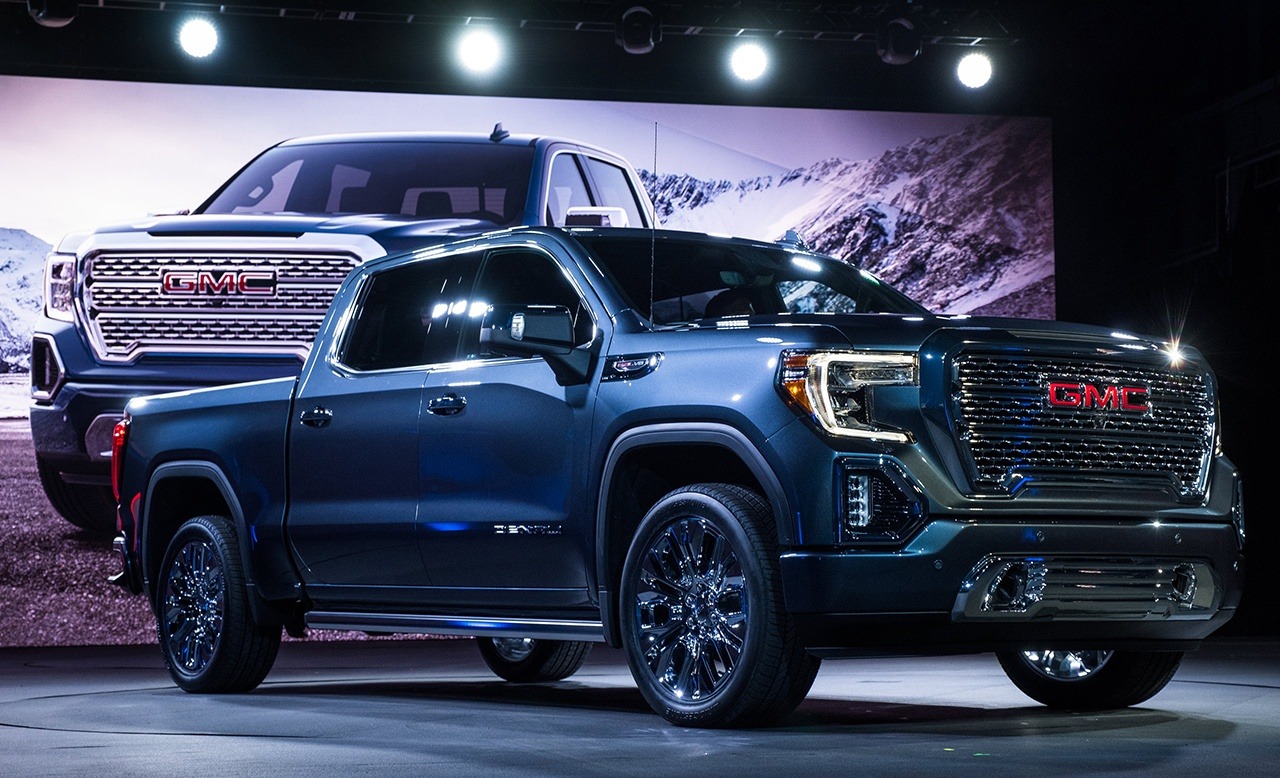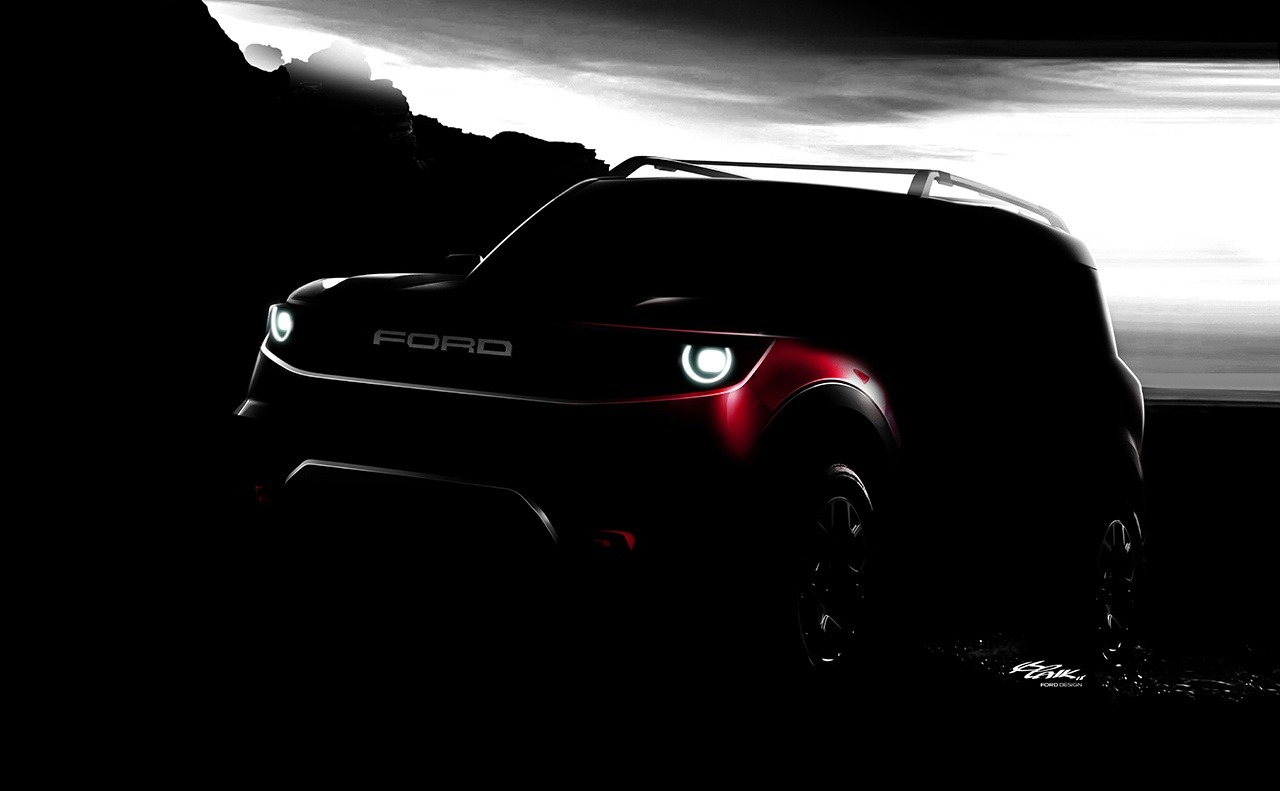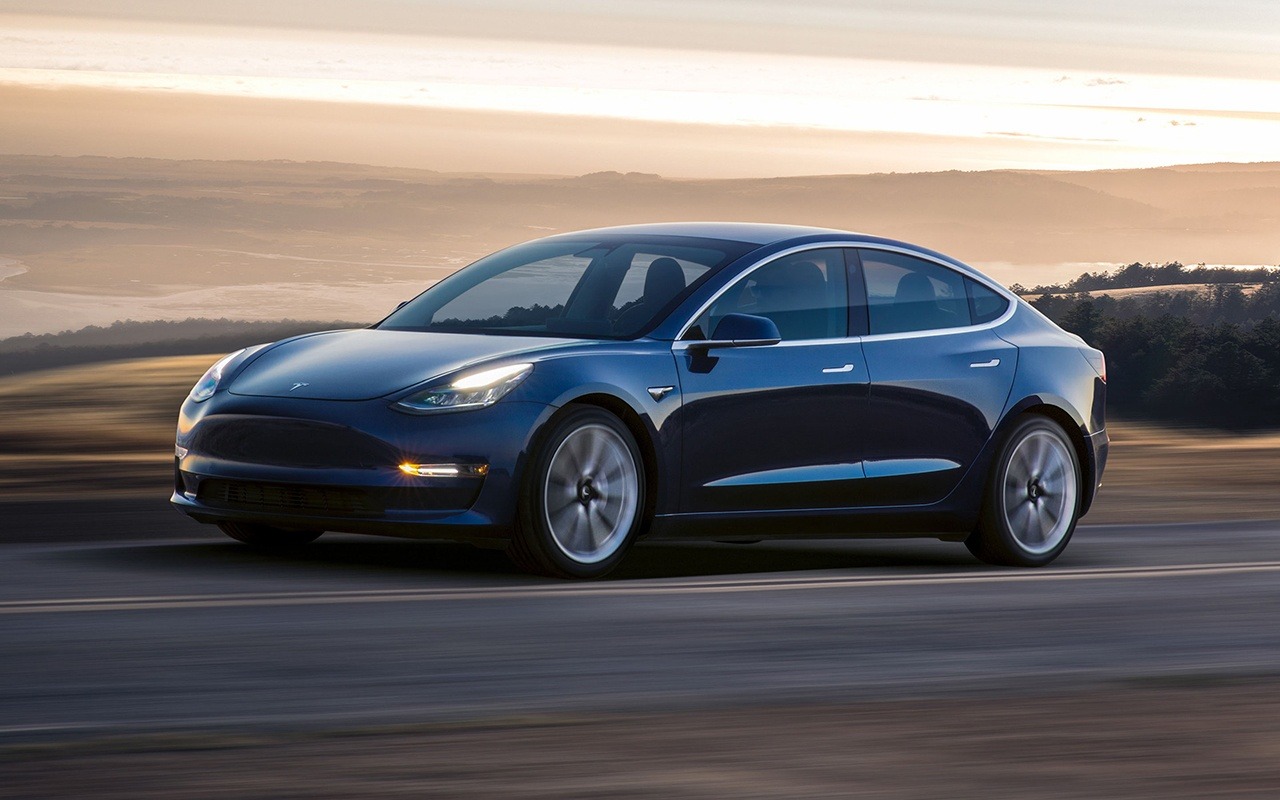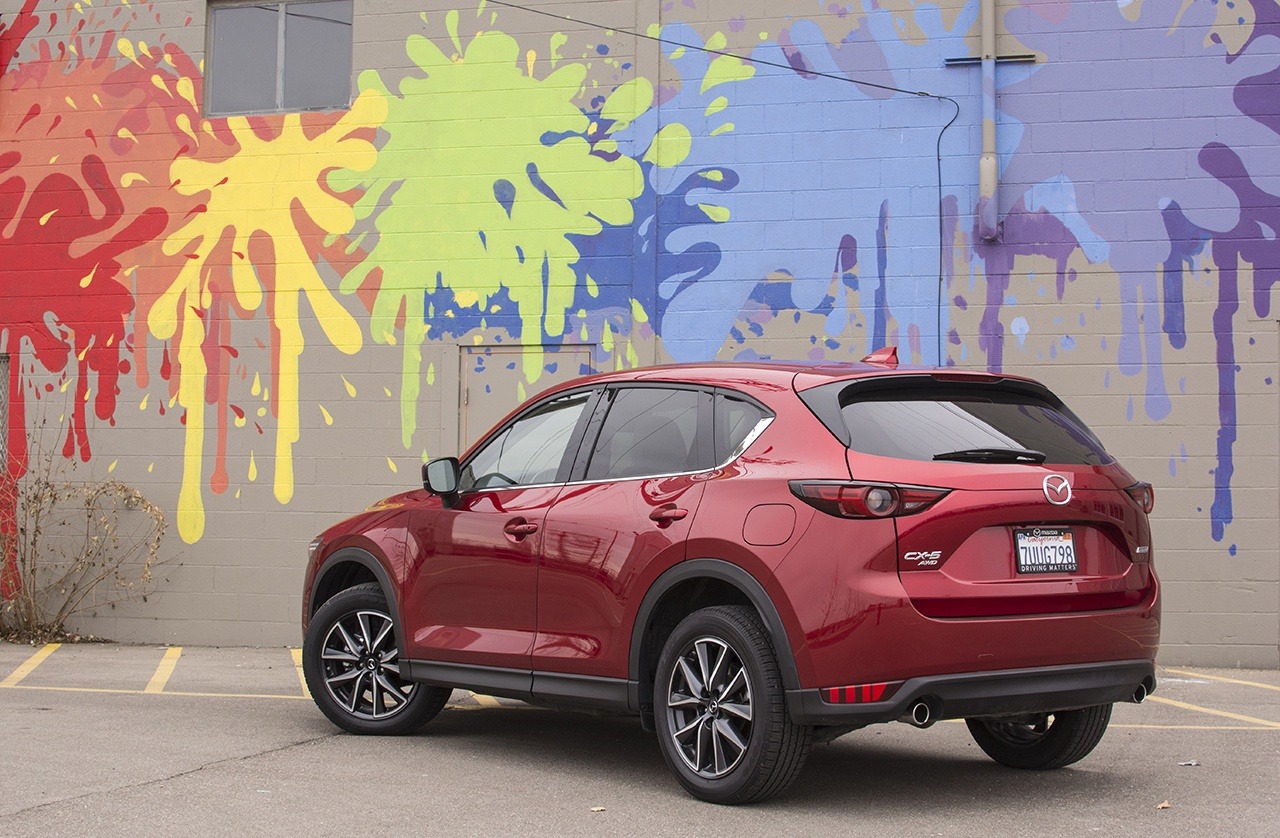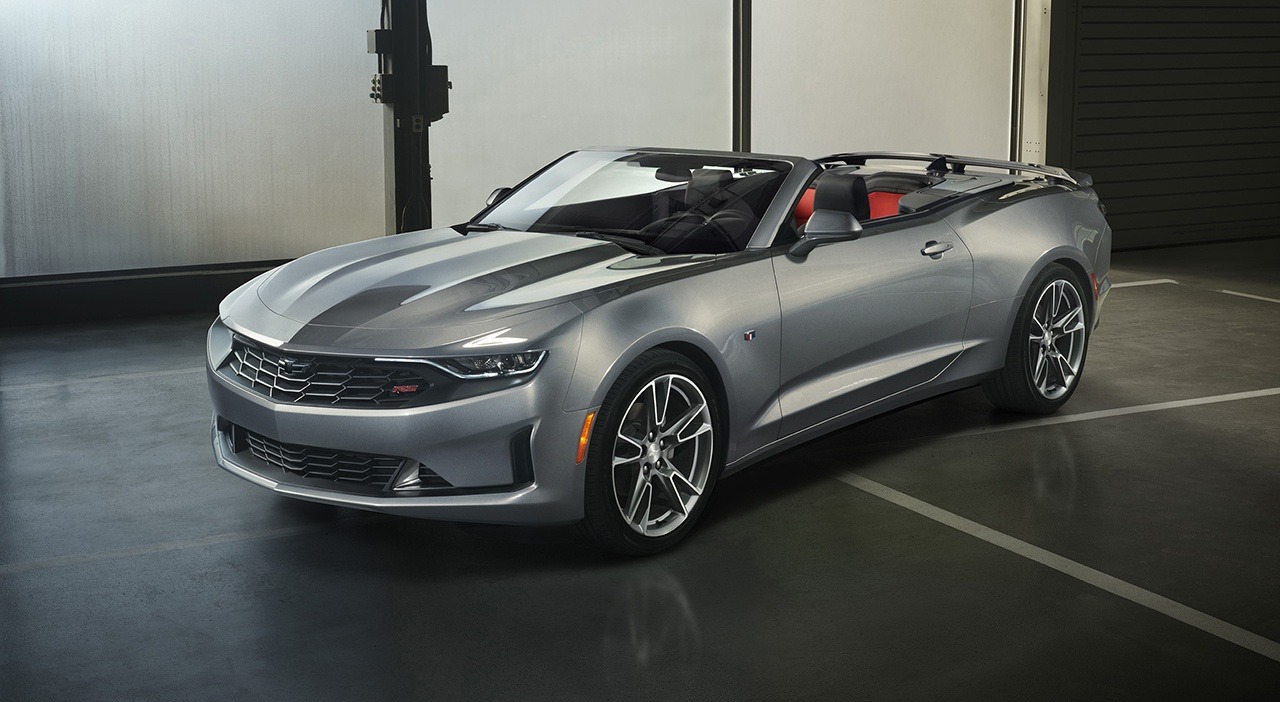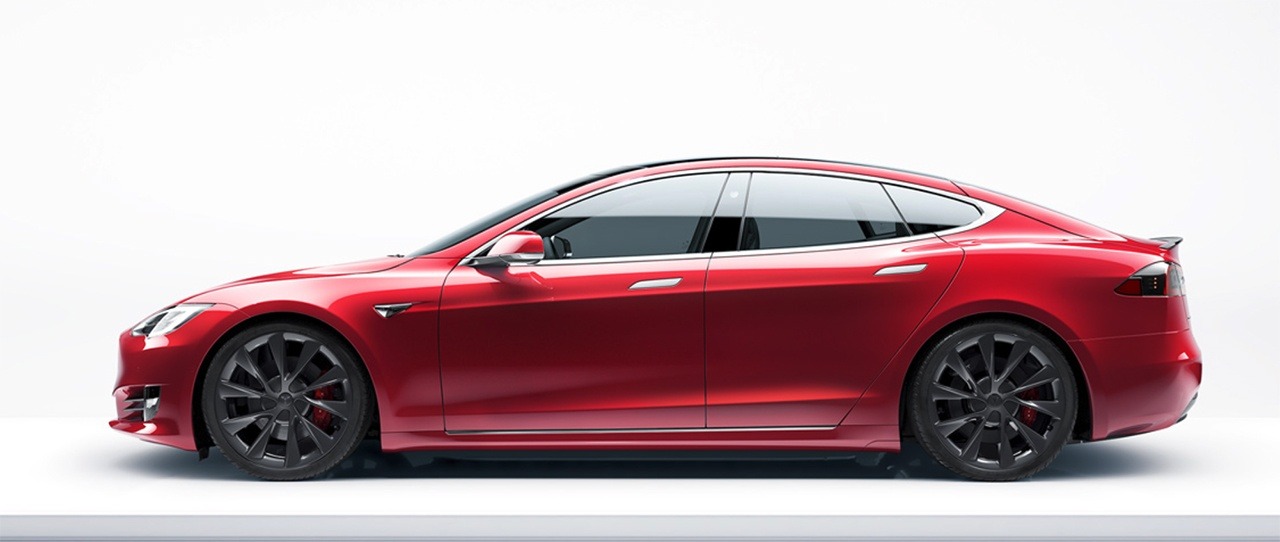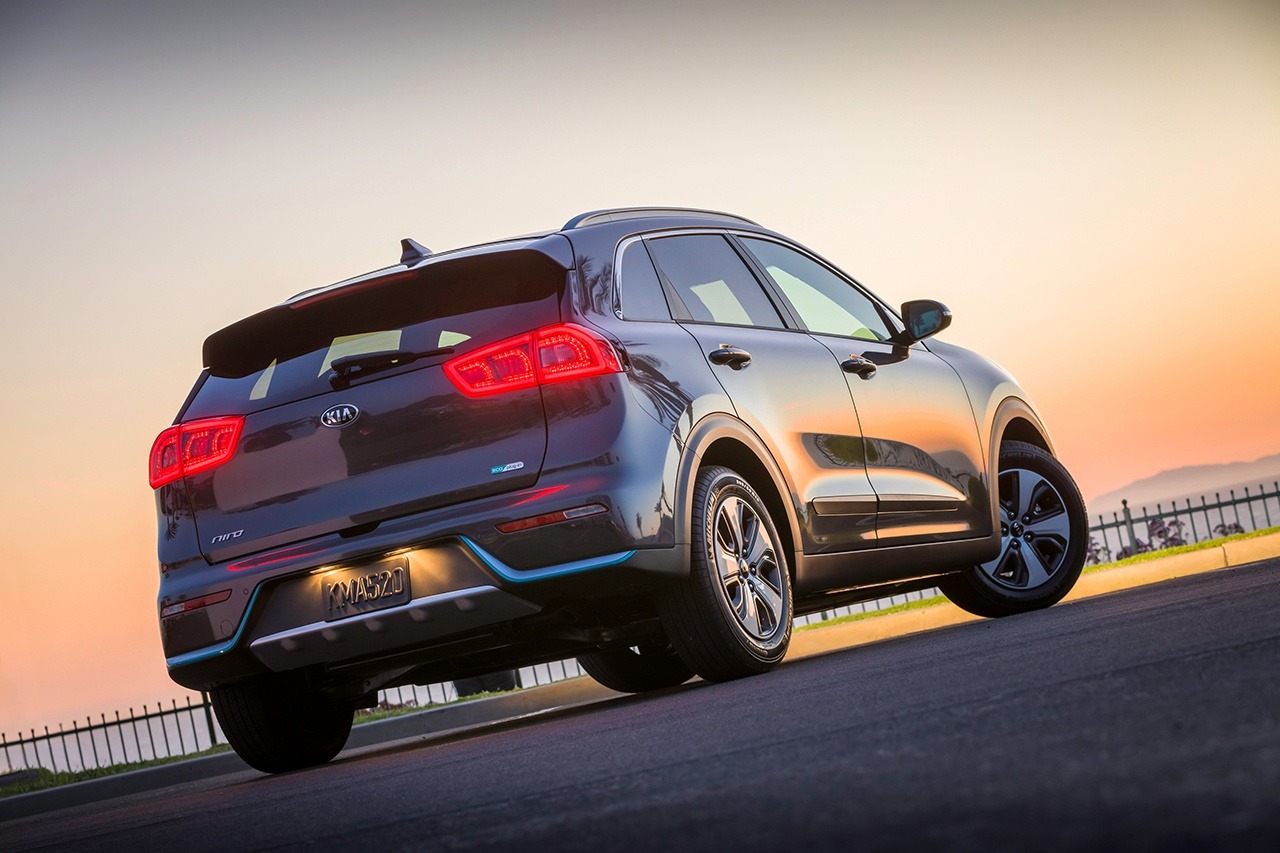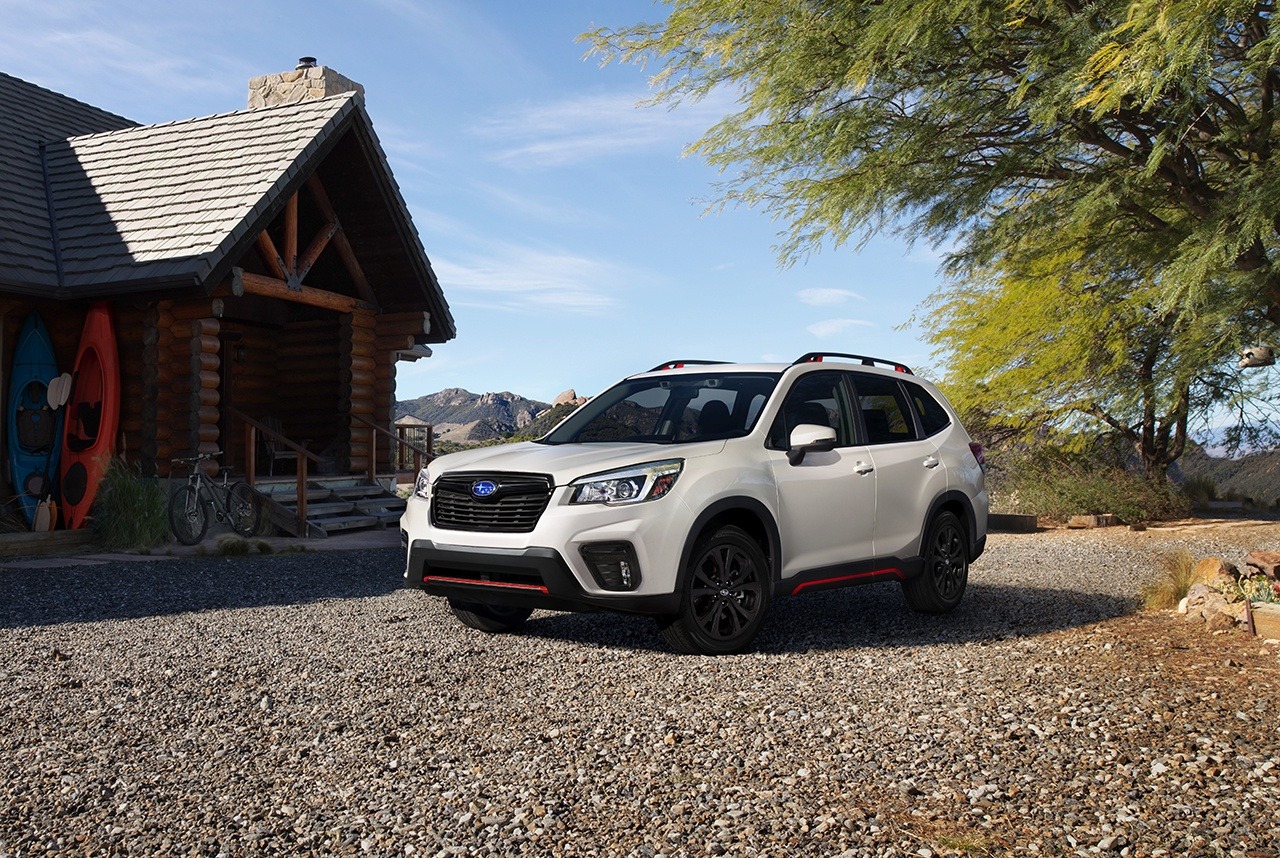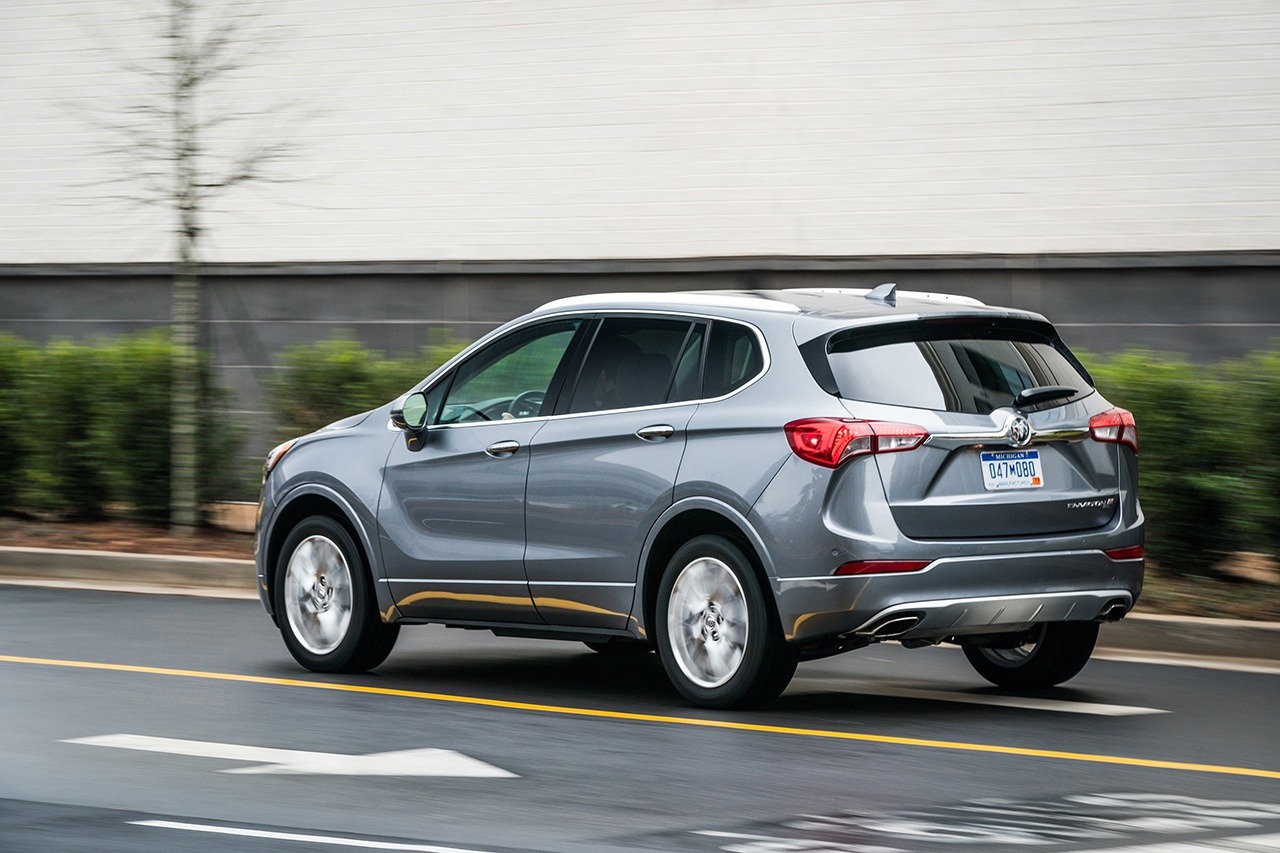-
Posts
32,884 -
Joined
-
Last visited
-
Days Won
5
Content Type
Forums
Articles
Garage
Gallery
Events
Store
Collections
Everything posted by William Maley
-
The One Ford plan brought in by former CEO Alan Mulally helped the automaker weather through some very tough times. A key part of this plan was cutting back on the number of architectures used around the world - from 30 to nine. But Ford is planning to go further with reducing them. Last week, Ford's head of product development and purchasing, Hau Thai-Tang revealed the company will be reducing the number of platforms to just five. "This is not saying One Ford was wrong. This is building on the strategy of One Ford and evolving from it," said Thai-Tang at the 2018 J.P. Morgan Auto Conference in New York. The move to five platforms will help save costs: According to Thai-Tang, 70 percent of a vehicle's value can be managed through modular platforms. It will also improve the efficiency of Ford's suppliers. The five platforms are as followed: RWD/AWD Body-on-Frame FWD/AWD Unibody RWD/AWD Unibody Commercial Van Unibody Electric Vehicle Unibody Source: Automotive News (Subscription Required)
-
- cost savings
- cuts
-
(and 2 more)
Tagged with:
-
The One Ford plan brought in by former CEO Alan Mulally helped the automaker weather through some very tough times. A key part of this plan was cutting back on the number of architectures used around the world - from 30 to nine. But Ford is planning to go further with reducing them. Last week, Ford's head of product development and purchasing, Hau Thai-Tang revealed the company will be reducing the number of platforms to just five. "This is not saying One Ford was wrong. This is building on the strategy of One Ford and evolving from it," said Thai-Tang at the 2018 J.P. Morgan Auto Conference in New York. The move to five platforms will help save costs: According to Thai-Tang, 70 percent of a vehicle's value can be managed through modular platforms. It will also improve the efficiency of Ford's suppliers. The five platforms are as followed: RWD/AWD Body-on-Frame FWD/AWD Unibody RWD/AWD Unibody Commercial Van Unibody Electric Vehicle Unibody Source: Automotive News (Subscription Required) View full article
-
- cost savings
- cuts
-
(and 2 more)
Tagged with:
-
When General Motors decided to study the Ford F-150 to help make the next-generation Chevrolet Silverado/GMC Sierra, they sent engineers to the front door of where the F-150 is built. According to Reuters, engineers went on a public factory tour of Ford's Dearborn truck plant to study how Ford was building them. Special attention was paid to workers attaching aluminum body panels to the trucks. After watching and timing the fitment of parts with stopwatches, GM engineers found some problems. “They had a real hard time getting those doors to fit,” said Tim Herrick, executive chief engineer for GM truck programs. Focusing on the doors, engineers bought F-150 doors as parts and took them apart. What they realized is that they could cut weight in their trucks with a combination of aluminum and thinner high strength steel for a lower cost. GM could have gone all-aluminum with their trucks. Herrick said the debate at the company “was a really hotly contested item for us.” But at the end of the day, the decision to use mixed metals will allow for a larger profit on the trucks. “We think we have thousands of dollars advantage (over Ford) just in the aluminum costs. It’s big,” said Herrick. Source: Reuters View full article
- 13 replies
-
- chevrolet silverado
- ford f-150
-
(and 3 more)
Tagged with:
-

GM Engineers Take A Tour of the F-150 Plant For Inspiration
William Maley posted an article in General Motors
When General Motors decided to study the Ford F-150 to help make the next-generation Chevrolet Silverado/GMC Sierra, they sent engineers to the front door of where the F-150 is built. According to Reuters, engineers went on a public factory tour of Ford's Dearborn truck plant to study how Ford was building them. Special attention was paid to workers attaching aluminum body panels to the trucks. After watching and timing the fitment of parts with stopwatches, GM engineers found some problems. “They had a real hard time getting those doors to fit,” said Tim Herrick, executive chief engineer for GM truck programs. Focusing on the doors, engineers bought F-150 doors as parts and took them apart. What they realized is that they could cut weight in their trucks with a combination of aluminum and thinner high strength steel for a lower cost. GM could have gone all-aluminum with their trucks. Herrick said the debate at the company “was a really hotly contested item for us.” But at the end of the day, the decision to use mixed metals will allow for a larger profit on the trucks. “We think we have thousands of dollars advantage (over Ford) just in the aluminum costs. It’s big,” said Herrick. Source: Reuters- 13 comments
-
- chevrolet silverado
- ford f-150
-
(and 3 more)
Tagged with:
-
Back in March, Ford held an event for journalists which outlined the company's plans for 24 months. One of the vehicles that was teased was a small, purpose-built SUV that would be positioned for "people who love getting away and spending time outdoors with their families and friends.". Some new details about this model has come to light. During an investor conference in New York, Ford's executive vice president of product development and purchasing, Hau Thai-Tang revealed that the new SUV would use the underpinnings of the next-generation Focus. Thai-Tang also said the model will feature “offroad positioning and imagery” and have a premium price. A source tells Reuters that the design of the new model will echo the original Bronco from the sixties. It could arrive next year as a 2020 model. Source: Reuters
-
- baby bronco
- baby suv
-
(and 2 more)
Tagged with:
-
Back in March, Ford held an event for journalists which outlined the company's plans for 24 months. One of the vehicles that was teased was a small, purpose-built SUV that would be positioned for "people who love getting away and spending time outdoors with their families and friends.". Some new details about this model has come to light. During an investor conference in New York, Ford's executive vice president of product development and purchasing, Hau Thai-Tang revealed that the new SUV would use the underpinnings of the next-generation Focus. Thai-Tang also said the model will feature “offroad positioning and imagery” and have a premium price. A source tells Reuters that the design of the new model will echo the original Bronco from the sixties. It could arrive next year as a 2020 model. Source: Reuters View full article
-
- baby bronco
- baby suv
-
(and 2 more)
Tagged with:
-
Everyone seemed to lose their mind when Tesla CEO Elon Musk tweeted out Tuesday that he was considering taking the company private. For a time, the NASDAQ had to halt trading of Tesla stock because of massive fluctuations in the share price. The reasoning behind this move made sense as it would allow the company to focus on the long-term. But this tweet has also brought some unattended problems. Reuters has learned from sources at Tesla that the board of directors is seeking more information from him as to how the buyout will be financed. As we reported yesterday, the board has talked about this idea for some time. But a source reveals that it hasn't gotten either a detailed plan from Musk, nor any information as to who will provide the funding. Both Reuters and CNBC are reporting that the board will make a decision on whether or not to do a formal review of Musk's proposal in the coming days. It also plans to speak with financial advisers about explore this proposal. Sources tell CNBC that the board will ask Musk to recuse himself from the review process of his proposal. He'll need to hire his own advisers for a review. There is another twist in this story. Musk has talked to Saudi Arabia's sovereign wealth fund about a take-private deal, according to a source. This is likely due to the Saudi's Public Investment Fund buying between a 3 to 5 percent stake in the automaker, worth about $2 billion that was brought to light this week. Tesla's board isn't the only group interested in Musk's plan. Last night, the Wall Street Journal reported that the Securities and Exchange Commission (SEC) is inquiring whether or not Musk was telling the truth when said that he had secured funding for the buyout. Under U.S. law, companies and officials cannot give misleading information about events to shareholders. It is unclear whether or not this will cause an investigation be opened or not. A SEC spokesman declined to comment. Musk could also be in trouble if the SEC find evidence that his tweet was aimed at increasing the company's share price. We'll keep you posted if anything new breaks. Source: Wall Street Journal (Subscription Required), Reuters, CNBC View full article
-

Tesla's Board Plans To Meet With Advisers About Going Private
William Maley posted an article in Tesla
Everyone seemed to lose their mind when Tesla CEO Elon Musk tweeted out Tuesday that he was considering taking the company private. For a time, the NASDAQ had to halt trading of Tesla stock because of massive fluctuations in the share price. The reasoning behind this move made sense as it would allow the company to focus on the long-term. But this tweet has also brought some unattended problems. Reuters has learned from sources at Tesla that the board of directors is seeking more information from him as to how the buyout will be financed. As we reported yesterday, the board has talked about this idea for some time. But a source reveals that it hasn't gotten either a detailed plan from Musk, nor any information as to who will provide the funding. Both Reuters and CNBC are reporting that the board will make a decision on whether or not to do a formal review of Musk's proposal in the coming days. It also plans to speak with financial advisers about explore this proposal. Sources tell CNBC that the board will ask Musk to recuse himself from the review process of his proposal. He'll need to hire his own advisers for a review. There is another twist in this story. Musk has talked to Saudi Arabia's sovereign wealth fund about a take-private deal, according to a source. This is likely due to the Saudi's Public Investment Fund buying between a 3 to 5 percent stake in the automaker, worth about $2 billion that was brought to light this week. Tesla's board isn't the only group interested in Musk's plan. Last night, the Wall Street Journal reported that the Securities and Exchange Commission (SEC) is inquiring whether or not Musk was telling the truth when said that he had secured funding for the buyout. Under U.S. law, companies and officials cannot give misleading information about events to shareholders. It is unclear whether or not this will cause an investigation be opened or not. A SEC spokesman declined to comment. Musk could also be in trouble if the SEC find evidence that his tweet was aimed at increasing the company's share price. We'll keep you posted if anything new breaks. Source: Wall Street Journal (Subscription Required), Reuters, CNBC -

Fuel Economy Figures Come Out On CX-5 Diesel... And it Isn't So Good
William Maley posted an article in Mazda
It seems like ages since Mazda announced plans to bring over a diesel engine. Many things have transpired since then with various delays and the Volkswagen diesel emission scandal. While the company said the diesel engine was still in the cards, we started to think it was as real as bigfoot or the loch ness monster. But the engine is one step closer to reality as the EPA has posted the fuel economy figures for the CX-5 diesel. For the front-wheel variant, the CX-5 diesel will return 28 City/31 Highway/29 Combined. All-wheel drive see a slight drop to 27/30/28. Major improvement over gas model, right? Not really. The FWD gas model does trail the diesel in the city by three, but there is only a one mpg difference in the highway and the combined figure is the same. The AWD gas model is pretty much the same story; three mpg difference in the city, two mpg difference on the highway, and the same figure for combined. It gets even worse if we compare it to the Chevrolet Equinox and GMC Terrain Diesel. In FWD guise, EPA figures stand at 28 City/39 Highway/32 Combined. AWD models return 28/38/32. We're guessing that new emissions equipment and harder testing likely affected CX-5 diesel's fuel economy figure. Mazda might sell the diesel engine as a performance upgrade - the 2.2L turbodiesel produces 170 horsepower and 310 pound-feet of torque. No timeframe has been given on when the CX-5 diesel will finally go on sale. Source: EPA -
It seems like ages since Mazda announced plans to bring over a diesel engine. Many things have transpired since then with various delays and the Volkswagen diesel emission scandal. While the company said the diesel engine was still in the cards, we started to think it was as real as bigfoot or the loch ness monster. But the engine is one step closer to reality as the EPA has posted the fuel economy figures for the CX-5 diesel. For the front-wheel variant, the CX-5 diesel will return 28 City/31 Highway/29 Combined. All-wheel drive see a slight drop to 27/30/28. Major improvement over gas model, right? Not really. The FWD gas model does trail the diesel in the city by three, but there is only a one mpg difference in the highway and the combined figure is the same. The AWD gas model is pretty much the same story; three mpg difference in the city, two mpg difference on the highway, and the same figure for combined. It gets even worse if we compare it to the Chevrolet Equinox and GMC Terrain Diesel. In FWD guise, EPA figures stand at 28 City/39 Highway/32 Combined. AWD models return 28/38/32. We're guessing that new emissions equipment and harder testing likely affected CX-5 diesel's fuel economy figure. Mazda might sell the diesel engine as a performance upgrade - the 2.2L turbodiesel produces 170 horsepower and 310 pound-feet of torque. No timeframe has been given on when the CX-5 diesel will finally go on sale. Source: EPA View full article
-
Ford has a new midsize crossover, but it will only be sold in China. Meet the Territory which will slot in between the EcoSport and Kuga (Escape to us). The model was developed with its joint-venture partner, Jiangling Motors Corp. The exterior looks very similar to the EcoSport subcompact crossover, albeit with a more aggressive bumper and smaller grille. Where the Territory stands out is the interior. The design is quite simple with Mustang-inspired toggle controls and stitching on various trim pieces. Power will come from either a regular gas engine, hybrid, or plug-in hybrid powertrain. Optional features include an infotainment system with Mandarin voice-command and Ford’s Co-Pilot360 suite of active driver assists. The Territory has a tough job as it will play a key part in Ford's plan to stem losses in sales. In the first half of 2018, the company reported sales in China had dropped 25 percent. This resulted in a $483 million loss in the second quarter (before taxes). Ford blamed an aging lineup as the reason to the sales decline. To solve this Ford is planning 50 new or redesigned vehicles that will launch in China beginning now and running through 2025 - beginning with the redesigned Focus and new Territory. The Territory goes on sale early next year. Source: Automotive News (Subscription Required), Roadshow
-
- china
- electrified
-
(and 3 more)
Tagged with:
-
Ford has a new midsize crossover, but it will only be sold in China. Meet the Territory which will slot in between the EcoSport and Kuga (Escape to us). The model was developed with its joint-venture partner, Jiangling Motors Corp. The exterior looks very similar to the EcoSport subcompact crossover, albeit with a more aggressive bumper and smaller grille. Where the Territory stands out is the interior. The design is quite simple with Mustang-inspired toggle controls and stitching on various trim pieces. Power will come from either a regular gas engine, hybrid, or plug-in hybrid powertrain. Optional features include an infotainment system with Mandarin voice-command and Ford’s Co-Pilot360 suite of active driver assists. The Territory has a tough job as it will play a key part in Ford's plan to stem losses in sales. In the first half of 2018, the company reported sales in China had dropped 25 percent. This resulted in a $483 million loss in the second quarter (before taxes). Ford blamed an aging lineup as the reason to the sales decline. To solve this Ford is planning 50 new or redesigned vehicles that will launch in China beginning now and running through 2025 - beginning with the redesigned Focus and new Territory. The Territory goes on sale early next year. Source: Automotive News (Subscription Required), Roadshow View full article
-
- china
- electrified
-
(and 3 more)
Tagged with:
-
Whenever an automaker introduces a redesigned model or makes some significant mechanical changes, usually the fuel economy go slightly up. But there are cases where those numbers remain the same or worse, go down. The New York Daily News reports that certain versions of the 2019 Chevrolet Camaro see a slight drop in fuel economy. 2019 Camaro V6: 1 mpg drop on highway with the manual (27 vs. 28 on the 2018 model), 1 mpg drop in combined with the 8-speed automatic (22 vs. 23) 2019 Camaro V8: 1 mpg drop on highway with the manual (24 vs. 25), 1 mpg drop in city with the 10-speed automatic (16 vs. 17) 2019 Camaro ZL1: 1 mpg drop in combined with the 10-speed automatic (15 vs. 16) Other Camaros, such as those equipped with the 2.0L turbo-four remain unchanged in their fuel economy figures. This is bit bizarre, especially on models equipped with the new 10-speed transmission. Some think it could be the Camaro's new face, which has received mixed reactions could be less aerodynamic than before. But if this was case, wouldn't all of the Camaro variants see some sort of drop? Source: New York Daily News View full article
- 18 replies
-
Whenever an automaker introduces a redesigned model or makes some significant mechanical changes, usually the fuel economy go slightly up. But there are cases where those numbers remain the same or worse, go down. The New York Daily News reports that certain versions of the 2019 Chevrolet Camaro see a slight drop in fuel economy. 2019 Camaro V6: 1 mpg drop on highway with the manual (27 vs. 28 on the 2018 model), 1 mpg drop in combined with the 8-speed automatic (22 vs. 23) 2019 Camaro V8: 1 mpg drop on highway with the manual (24 vs. 25), 1 mpg drop in city with the 10-speed automatic (16 vs. 17) 2019 Camaro ZL1: 1 mpg drop in combined with the 10-speed automatic (15 vs. 16) Other Camaros, such as those equipped with the 2.0L turbo-four remain unchanged in their fuel economy figures. This is bit bizarre, especially on models equipped with the new 10-speed transmission. Some think it could be the Camaro's new face, which has received mixed reactions could be less aerodynamic than before. But if this was case, wouldn't all of the Camaro variants see some sort of drop? Source: New York Daily News
- 18 comments
-
Yesterday afternoon, Tesla CEO Elon Musk tweeted this This sent everyone into a tizzy, wondering if he was being serious or not. In fact, NASDAQ had to halt trading of Tesla for a couple of hours because of this tweet. Thankfully, Tesla posted an email that was sent by Musk to employees explaining why. The key reason comes down wanting to minimize distractions and begin focusing on the long term. "But the reason for doing this is all about creating the environment for Tesla to operate best. As a public company, we are subject to wild swings in our stock price that can be a major distraction for everyone working at Tesla, all of whom are shareholders. Being public also subjects us to the quarterly earnings cycle that puts enormous pressure on Tesla to make decisions that may be right for a given quarter, but not necessarily right for the long-term," Musk wrote in the email. Musk also made light of the short sellers who bet against Tesla succeeding, saying the company was the most shorted stock "in the history of the stock market". By going private, it gives the company some protection. How would this changeover to private work? Musk said he would like to offer shareholders to either remain or sell their shares at $420 per share (a bit higher than the $375.16 share price at the time of this writing). He would also like Tesla's employees to remain as shareholders. "Basically, I'm trying to accomplish an outcome where Tesla can operate at its best, free from as much distraction and short-term thinking as possible, and where there is as little change for all of our investors, including all of our employees, as possible," the email states. This move will need to be approved by Tesla's board of directors. In a statement released this morning, several members of the board published a statement that echoes the reasons given by Musk. It also reveals that this idea had been on Musk's mind for sometime. "Last week, Elon opened a discussion with the board about taking the company private. This included discussion as to how being private could better serve Tesla's long-term interests, and also addressed the funding for this to occur. The board has met several times over the last week and is taking the appropriate next steps to evaluate this," the statement says. One of those "appropriate next steps" is getting enough money to do the buybacks. Musk in his tweet said he has funding for it, but it is unclear who and how much is being provided. According to MarketWatch, the buyout would total $72 billion if all of the shareholders decide to sell. Source: Tesla, MarketWatch View full article
-
Yesterday afternoon, Tesla CEO Elon Musk tweeted this This sent everyone into a tizzy, wondering if he was being serious or not. In fact, NASDAQ had to halt trading of Tesla for a couple of hours because of this tweet. Thankfully, Tesla posted an email that was sent by Musk to employees explaining why. The key reason comes down wanting to minimize distractions and begin focusing on the long term. "But the reason for doing this is all about creating the environment for Tesla to operate best. As a public company, we are subject to wild swings in our stock price that can be a major distraction for everyone working at Tesla, all of whom are shareholders. Being public also subjects us to the quarterly earnings cycle that puts enormous pressure on Tesla to make decisions that may be right for a given quarter, but not necessarily right for the long-term," Musk wrote in the email. Musk also made light of the short sellers who bet against Tesla succeeding, saying the company was the most shorted stock "in the history of the stock market". By going private, it gives the company some protection. How would this changeover to private work? Musk said he would like to offer shareholders to either remain or sell their shares at $420 per share (a bit higher than the $375.16 share price at the time of this writing). He would also like Tesla's employees to remain as shareholders. "Basically, I'm trying to accomplish an outcome where Tesla can operate at its best, free from as much distraction and short-term thinking as possible, and where there is as little change for all of our investors, including all of our employees, as possible," the email states. This move will need to be approved by Tesla's board of directors. In a statement released this morning, several members of the board published a statement that echoes the reasons given by Musk. It also reveals that this idea had been on Musk's mind for sometime. "Last week, Elon opened a discussion with the board about taking the company private. This included discussion as to how being private could better serve Tesla's long-term interests, and also addressed the funding for this to occur. The board has met several times over the last week and is taking the appropriate next steps to evaluate this," the statement says. One of those "appropriate next steps" is getting enough money to do the buybacks. Musk in his tweet said he has funding for it, but it is unclear who and how much is being provided. According to MarketWatch, the buyout would total $72 billion if all of the shareholders decide to sell. Source: Tesla, MarketWatch
-
The next-generation Land Rover Defender has had quite the lengthy development with various changes taking place. We have reported that the new Defender will not look like the DC 100 concepts shown earlier this decade. There is another change afoot. According to Autocar, Land Rover has decided to make the new Defender to debut the Modular Longitudinal Architecture (MLA). Previously, the Defender was expected to use the Premium Lightweight Architecture (PLA) - what underpins the Discovery and a number of Range Rover models. But MLA will be replacing PLA as it will be lighter and offer more flexibility to be used in more models. Using the Defender makes sense as its being redone from the ground up, and may explain the lengthy delay in development. One other interesting tidbit is the Defender will be built in Slovakia, not Great Britain like the previous model. Autocar says the Defender will begin production in 2020. There are some other tidbits concerning other Land Rover and Jaguar models in Autocar's report The next-generation Range Rover Evoque is said to be debuting later this year at the LA Auto Show, with sales beginning in the new year. It will use a heavily reworked version of its current platform that will be known as Premium Transverse Architecture (PTA). This will allow a new plug-in hybrid model that will use a new three-cylinder Ingenium diesel engine - don't expect to see it here. Jaguar's large crossover, known as J-Pace will go into production in 2020. It is understood it will use MLA. Another rumor about the Ingenium straight-six. Reportedly, JLR will use a high-performance version with electric turbochargers to replace their V8 engines. Source: Autocar View full article
-

Rumorpile: A New Modular Platform To Debut with Defender
William Maley posted an article in Land Rover
The next-generation Land Rover Defender has had quite the lengthy development with various changes taking place. We have reported that the new Defender will not look like the DC 100 concepts shown earlier this decade. There is another change afoot. According to Autocar, Land Rover has decided to make the new Defender to debut the Modular Longitudinal Architecture (MLA). Previously, the Defender was expected to use the Premium Lightweight Architecture (PLA) - what underpins the Discovery and a number of Range Rover models. But MLA will be replacing PLA as it will be lighter and offer more flexibility to be used in more models. Using the Defender makes sense as its being redone from the ground up, and may explain the lengthy delay in development. One other interesting tidbit is the Defender will be built in Slovakia, not Great Britain like the previous model. Autocar says the Defender will begin production in 2020. There are some other tidbits concerning other Land Rover and Jaguar models in Autocar's report The next-generation Range Rover Evoque is said to be debuting later this year at the LA Auto Show, with sales beginning in the new year. It will use a heavily reworked version of its current platform that will be known as Premium Transverse Architecture (PTA). This will allow a new plug-in hybrid model that will use a new three-cylinder Ingenium diesel engine - don't expect to see it here. Jaguar's large crossover, known as J-Pace will go into production in 2020. It is understood it will use MLA. Another rumor about the Ingenium straight-six. Reportedly, JLR will use a high-performance version with electric turbochargers to replace their V8 engines. Source: Autocar -
Under the current standards for vehicle emissions, automakers have a variety of ways to achieve compliance. These are known as "compliance flexibilities" which allows an automaker to sell electric vehicles to off-set gad-guzzlers like SUVs as an example. But the recent proposal by the Trump administration to ease emission standards, will remove these flexibilities. The proposal unveiled last week would freeze fuel-economy and emissions standards at their 2020 levels for several years beyond that. This would seem like a positive for automakers as trucks and SUVs/crossovers are selling like hotcakes. But the removal of this provision has automakers crying fowl, saying these help with global vehicle development. The heads of the Alliance of Automobile Manufacturers and the Association of Global Automakers wrote a letter to Trump stating that the “flexible compliance pathways that pave the way for research and deployment in advanced fuel-saving technologies”. “We are global manufacturers; to compete around the world, we must continue to invest in both more efficient internal combustion engine technologies, electric-drive technologies and fuel cells,” said Mitch Bainwol of the Alliance, and John Bozzella of the Global Automakers. But there is a reason the government is removing those compliance flexibilities as it "existing fuel-economy program easier to administer and more transparent". This makes it easier for regulators and consumers to verify an automaker's claim. The current system is somewhat confusing, as thirstier automakers can buy into compliance by trading emission credits from more efficient ones. The trades and prices can be shielded from public viewing. Source: Bloomberg View full article
- 3 replies
-
- automakers
- emissions
-
(and 1 more)
Tagged with:
-
Under the current standards for vehicle emissions, automakers have a variety of ways to achieve compliance. These are known as "compliance flexibilities" which allows an automaker to sell electric vehicles to off-set gad-guzzlers like SUVs as an example. But the recent proposal by the Trump administration to ease emission standards, will remove these flexibilities. The proposal unveiled last week would freeze fuel-economy and emissions standards at their 2020 levels for several years beyond that. This would seem like a positive for automakers as trucks and SUVs/crossovers are selling like hotcakes. But the removal of this provision has automakers crying fowl, saying these help with global vehicle development. The heads of the Alliance of Automobile Manufacturers and the Association of Global Automakers wrote a letter to Trump stating that the “flexible compliance pathways that pave the way for research and deployment in advanced fuel-saving technologies”. “We are global manufacturers; to compete around the world, we must continue to invest in both more efficient internal combustion engine technologies, electric-drive technologies and fuel cells,” said Mitch Bainwol of the Alliance, and John Bozzella of the Global Automakers. But there is a reason the government is removing those compliance flexibilities as it "existing fuel-economy program easier to administer and more transparent". This makes it easier for regulators and consumers to verify an automaker's claim. The current system is somewhat confusing, as thirstier automakers can buy into compliance by trading emission credits from more efficient ones. The trades and prices can be shielded from public viewing. Source: Bloomberg
- 3 comments
-
- automakers
- emissions
-
(and 1 more)
Tagged with:
-
While the Trump administration is still deciding whether or not to put tariffs on imported vehicles, certain automakers are bracing for the worst. During a briefing in Tokyo, Subaru is predicting a "big impact" if the U.S. does put tariffs into place. “It’s a fact that there would be a big impact from a U.S. tariff increase. We’re studying what the impact might be but there are too many unknowns at this point, so we want to refrain from giving a specific figure,” said Toshiaki Okada, Subaru's Chief Financial Officer. Of the 670,900 vehicles it sold in the U.S. through the year that ended in March, about half were imported, including the Forester. The rest of the vehicles - Legacy, Outback, and Ascent - are built in Indiana. According to data gathered by Bloomberg, Subaru would be the hardest hit by tariffs as over 67 percent of their revenues from North America. This is more than Honda (52.5 percent), Nissan (48.9 percent), and Toyota (35.2 percent). Source: Bloomberg View full article
-
While the Trump administration is still deciding whether or not to put tariffs on imported vehicles, certain automakers are bracing for the worst. During a briefing in Tokyo, Subaru is predicting a "big impact" if the U.S. does put tariffs into place. “It’s a fact that there would be a big impact from a U.S. tariff increase. We’re studying what the impact might be but there are too many unknowns at this point, so we want to refrain from giving a specific figure,” said Toshiaki Okada, Subaru's Chief Financial Officer. Of the 670,900 vehicles it sold in the U.S. through the year that ended in March, about half were imported, including the Forester. The rest of the vehicles - Legacy, Outback, and Ascent - are built in Indiana. According to data gathered by Bloomberg, Subaru would be the hardest hit by tariffs as over 67 percent of their revenues from North America. This is more than Honda (52.5 percent), Nissan (48.9 percent), and Toyota (35.2 percent). Source: Bloomberg
-
There is actually a bigger reason. Allow me to pull some quotes from Reuters.
- 71 replies
-
- 2
-

-
- buick
- buick envision
-
(and 5 more)
Tagged with:
-
The Buick Envision finds itself in a tough spot. General Motors has been exporting the model to the U.S. since 2016. But with the on-going trade-war between the U.S. and China, it means the Envision could smacked with a 25% percent tariff. That is why GM is asking for exemption on the model. In a statement provided to Reuters, GM said that it filed the exemption request on July 30th to the U.S. Trade Representative. In the request, GM makes some sound arguments as to why the Envision should be excluded. Price is major factor. If the vehicle is hit with a 25 percent tariff, GM would be forced to pull it from the U.S. unless it wants to a take serious loss on each model. Why not build it here? The Envision has been a target of critics of Chinese-made goods, including leaders of UAW. GM explains that the sales volume of the Envision doesn't justify moving it to the U.S. Last year, Buick only sold 41,040 Envisions in the U.S. In China, Buick moved about 210,000 models. In addition, the current Envision is reaching the end of its current lifecycle before the company could make the preparations to build the model here. GM also makes the argument that the loss of the Envision would put them in a distinct disadvantage against foreign competitors such as Acura and Volvo. You can check out GM's request on regulations.gov website, which is tracking requests for exclusions from the Section 301 tariff. If the Envision does get hit with a 25 percent tariff, GM has already taken some steps to relieve some of the pain. Before the higher import tariffs went into affect, GM shipped in a six-month supply of Envisions that would be hit with the much smaller 2.5 percent tariff. This should keep dealers happy in terms of stock and not having to deal with a higher price. Source: Reuters, Regulations.gov View full article
- 71 replies
-
- buick
- buick envision
-
(and 5 more)
Tagged with:
-

GM Seeks An Exemption To Exclude Buick Envision from Tariffs
William Maley posted an article in Buick
The Buick Envision finds itself in a tough spot. General Motors has been exporting the model to the U.S. since 2016. But with the on-going trade-war between the U.S. and China, it means the Envision could smacked with a 25% percent tariff. That is why GM is asking for exemption on the model. In a statement provided to Reuters, GM said that it filed the exemption request on July 30th to the U.S. Trade Representative. In the request, GM makes some sound arguments as to why the Envision should be excluded. Price is major factor. If the vehicle is hit with a 25 percent tariff, GM would be forced to pull it from the U.S. unless it wants to a take serious loss on each model. Why not build it here? The Envision has been a target of critics of Chinese-made goods, including leaders of UAW. GM explains that the sales volume of the Envision doesn't justify moving it to the U.S. Last year, Buick only sold 41,040 Envisions in the U.S. In China, Buick moved about 210,000 models. In addition, the current Envision is reaching the end of its current lifecycle before the company could make the preparations to build the model here. GM also makes the argument that the loss of the Envision would put them in a distinct disadvantage against foreign competitors such as Acura and Volvo. You can check out GM's request on regulations.gov website, which is tracking requests for exclusions from the Section 301 tariff. If the Envision does get hit with a 25 percent tariff, GM has already taken some steps to relieve some of the pain. Before the higher import tariffs went into affect, GM shipped in a six-month supply of Envisions that would be hit with the much smaller 2.5 percent tariff. This should keep dealers happy in terms of stock and not having to deal with a higher price. Source: Reuters, Regulations.gov- 71 comments
-
- buick
- buick envision
-
(and 5 more)
Tagged with:



